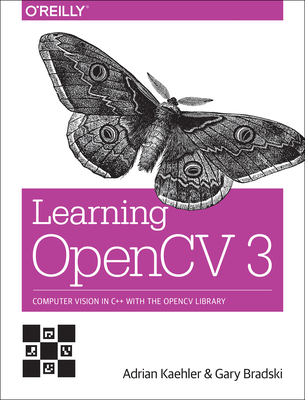Description
Get started in the rapidly expanding field of computer vision with this practical guide. Written by Adrian Kaehler and Gary Bradski, creator of the open source OpenCV library, this book provides a thorough introduction for developers, academics, roboticists, and hobbyists. You'll learn what it takes to build applications that enable computers to "see" and make decisions based on that data.
With over 500 functions that span many areas in vision, OpenCV is used for commercial applications such as security, medical imaging, pattern and face recognition, robotics, and factory product inspection. This book gives you a firm grounding in computer vision and OpenCV for building simple or sophisticated vision applications. Hands-on exercises in each chapter help you apply what you've learned.
This volume covers the entire library, in its modern C++ implementation, including machine learning tools for computer vision.
- Learn OpenCV data types, array types, and array operations
- Capture and store still and video images with HighGUI
- Transform images to stretch, shrink, warp, remap, and repair
- Explore pattern recognition, including face detection
- Track objects and motion through the visual field
- Reconstruct 3D images from stereo vision
- Discover basic and advanced machine learning techniques in OpenCV
About the Author
Dr. Adrian Kaehler is a senior scientist at Applied Minds Corporation. His current research includes topics in machine learning, statistical modeling, computer vision and robotics. Adrian received his Ph.D. in Theoretical Physics from Columbia university in 1998. Adrian has since held positions at Intel Corporation and the Stanford University AI Lab, and was a member of the winning Stanley race team in the DARPA Grand Challenge. He has a variety of published papers and patents in physics, electrical engineering, computer science, and robotics.Dr. Gary Rost Bradski is a consulting professor in the CS department at Stanford University AI Lab where he mentors robotics, machine learning and computer vision research. He is also Senior Scientist at Willow Garage http: //www.willowgarage.com, a recently founded robotics research institute/incubator. He has a BS degree in EECS from U.C. Berkeley and a PhD from Boston University. He has 20 years of industrial experience applying machine learning and computer vision spanning option trading operations at First Union National Bank, to computer vision at Intel Research to machine learning in Intel Manufacturing and several startup companies in between. Gary started the Open Source Computer Vision Library (OpenCV http: //sourceforge.net/projects/opencvlibrary/ ), the statistical Machine Learning Library (MLL comes with OpenCV), and the Probabilistic Network Library (PNL). OpenCV is used around the world in research, government and commercially. The vision libraries helped develop a notable part of the commercial Intel performance primitives library (IPP http: //tinyurl.com/36ua5s). Gary also organized the vision team for Stanley, the Stanford robot that won the DARPA Grand Challenge autonomous race across the desert for a $2M team prize and helped found the Stanford AI Robotics project at Stanford http: //www.cs.stanford.edu/group/stair/ working with Professor Andrew Ng. Gary has over 50 publications and 13 issued patents with 18 pending. He lives in Palo Alto with his wife and 3 daughters and bikes road or mountains as much as he can.

